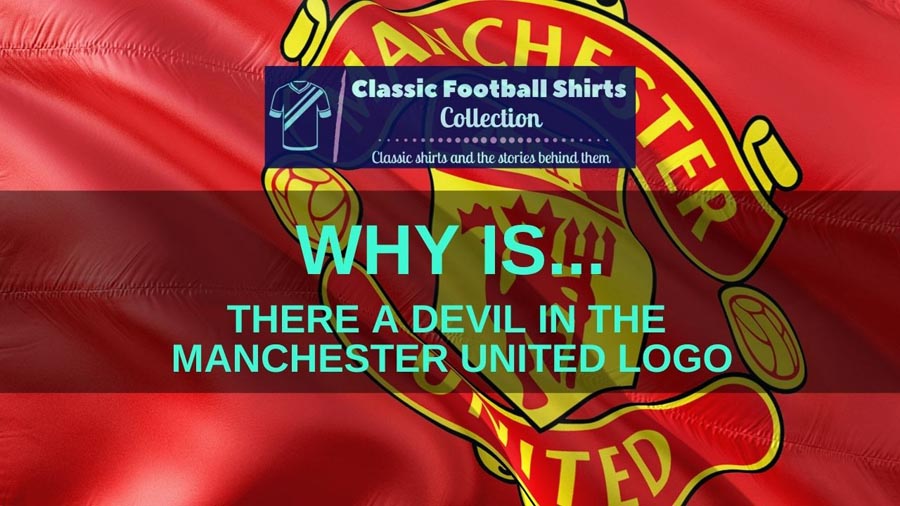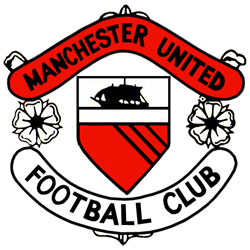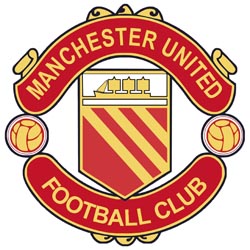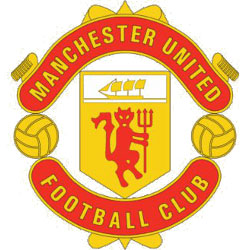
The devil is almost as synonymous with Manchester United as some of their most famous players and managers.
But why is there a devil in the Manchester United logo? And where did the nickname the Red Devils come from?
These two questions go hand in hand, and the story behind the devil makes for interesting reading.
It involves one of the biggest names in the club’s history and a team from a different sport.
So sit back and let’s find out all…
Why Is There A Devil In The Manchester United Logo?
The devil in the Manchester United logo was added in 1973 and came about largely due to the influence of legendary manager Sir Matt Busby. Busby was keen for the club to cut its ties with its Busby’s Babes nickname in the aftermath of the Munich air disaster which saw eight of the Babes killed. He took inspiration from Salford rugby club which was known as the Red Devils, thinking it was an intimidating and fitting nickname for the football club.

How Sir Matt Busby Came Up With the Red Devils Nickname
For some reason, I just presumed Manchester United had always been called the Red Devils, but that isn’t the case.
In fact, they only really started to adopt the moniker in the 1960s and 70s and it wasn’t until 1973 that the devil symbol first adorned the Manchester United badge.
The brainchild behind it was legendary manager Sir Matt Busby, and it came about under rather sad circumstances.
RELATED ===> Revealed: The Best Retro Manchester United Shirts
For the first half of their history, Manchester United was known as The Reds, and then in the 1950s and 60s, the Busby Babes.
The Busby Babes was the name given to a group of United players who progressed from the club’s youth team into the first team in the 1950s and early 1960s.
The term was first used by Manchester Evening News journalist Tom Jackson in 1951.
As United went on to considerable success with their young team in the 1950s it stuck.
The teams that won United the championship in 1956 and 1957 had an average age of 21 years old.
But then in February 1958 disaster struck. Eight of the Busby Babes died in, or as a result of, the Munich air crash.
After the disaster, the Busby Babes nickname hung over the club like a dark cloud.
Whilst Busby set about rebuilding his squad he took inspiration from the local rugby league club Salford.
In 1934 Salford had gone on a rugby tour of France.
Such was their dominance during the tour that French journalists dubbed them “Les Diables Rouges” or The Red Devils.
A few months after the Munich air disaster, in November 1958, Salford played a match at Old Trafford.
Busby caught wind of it, and of their nickname, and liked the intimidating sound of it.
With his encouragement, the club began incorporating a devil logo into match day programmes and scarves.
So if you are here asking why do they call Manchester United the Red Devils? Then now you know the answer.
It is all down to Sir Matt Busby!
When Did Manchester United Add the Devil to Their Logo?
It was until 1973 that United changed its crest to include the now-famous red devil holding a trident.
At the time that was the sixth permanent logo the club had had in its history.
Logo 1: 1878 to 1891

Officially the first two logos weren’t Manchester United logos, as they were when the club was called Newton Heath.
Its first logo is a clear sign of the club’s heritage, they were formed in 1878, initially as Lancashire & Yorkshire Railway Carriage & Wagon Works Cricket & Football Club.
A train is clearly visible and it carries the iconic yellow and green colours that are still synonymous with the club today, mainly as a sign of protest against the ownership of the Glazer family.
Logo 2: 1891 to 1902

Still known at this point as Newton Heath the refreshed badge saw the train removed as the club moved away from its connection to the Lancashire & Yorkshire Railway Carriage company.
Logo 3: 1902-1960

In 1902 Newton Heath changed its name to Manchester United, which obviously meant a new logo was needed.
The globe is seen as a reference to Manchester’s dominance in world trade, whilst the ship reflects the Manchester Ship Canal.
The three yellow stripes represent the three main rivers in Manchester – the Irwell, Irk and Medlock, whilst ‘Concilio et Labore’ means ‘wisdom and effort’ which was the city’s motto.
RELATED ===> Why Does The Manchester United Badge Have A Ship On It?
Logo 4: 1960-1970

This logo was a real modernization of the club’s logo.
The three lines remain, as does the ship, and Manchester United’s name appears on the club badge for the first time.
Logo 5: 1970-1973

The logo is updated once again, with more usage of the color yellow and a more visually striking look.
Footballs replace the roses and the ship and three stripes remain.
Logo 6: 1973-1998

The now-iconic ‘Red Devil’ complete with trident appears on the club badge for the first time.
The devil replaces the three stripes and the shield turns yellow to contrast with the red devil.
Logo 7: 1998-present

The logo designed in 1973 is given a make-over and brought into the 21st century.
The words ‘Football Club’ are removed, with Manchester United encasing the devil and the ship, with the ship now appearing on a red rather than white background.
RELATED ===> Why Do Manchester United Wear Red?
Final Thoughts
So now you know the reason behind adding a devil to the Manchester United badge and why United are called the Red Devils.
It came about as the club tried to cut its ties with its famous ‘Busby Babes’ nickname in the wake of the Munich air disaster.
It signified a fresh start for the club as they set about rebuilding their depleted squad and was inspired by United’s neighbours Salford rugby club who had become known as the Red Devils following a tour in France in 1934.
It shows how far Sir Matt Busby’s influence at the club extended at the time.
He didn’t just decide what players to sign, but also what the club badge and nickname should be!
